THE PURSUIT OF PERFECTION
by John Barsness

ONE OF the many defining characteristics of the subspecies of the humans often called “rifle loonies” is the constant pursuit of perfection. This is understandable in, say, benchrest rifles, where the goal is to shoot several bullets through the same hole, but more iffy in hunting rifles. Which is, of course, why Campfire threads about deer rifles or (even more frequently) comparisons between two hunting cartridges go on and on and on …
This seems to be especially true the more the two cartridges resemble each other — and I’m not talking about the long-time gun magazine standby, the .270 Winchester versus the .30-06 Springfield. These days it’s more likely to involve the .270 Winchester and the .280 Remington/.280 Ackley Improved, or the .260 Remington and the 6.5 Creedmoor.
The “discussion” will also be crammed with more minutiae than .270 vs. .30-06, because rifle loonies obsess over minutia, as a result almost always ends up quoting lots of numbers. These include ballistic coefficients (especially important these days, when some hunters believe big game animals must be shot a long way off, or they don’t count). As an example, a few years ago I killed a whitetail buck with pretty fair-sized antlers on a riverbottom in eastern Montana. A photo of me and the buck showed up in a magazine, and some people commented on the Campfire, of course asking various rifle-loony questions about the rifle, bullet, range, etc. When I said the range was about 35 yards, one guy snidely suggested, “Only 35 yards! Not much of a hunter, are you?”
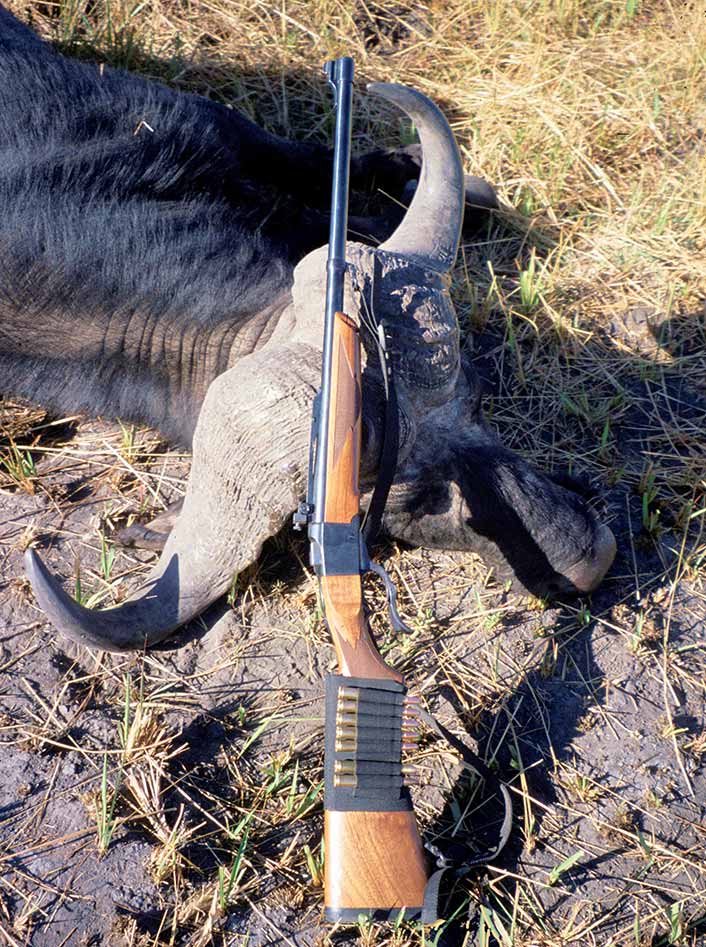
The discussion of ballistic coefficients also necessarily quotes different sources, evoking arguments about which source is really, truly correct. Of course, that never gets totally settled because, unlike back in the old days when BC’s were set in stone by handloading manuals “updated” about once a decade, shooters who get into long-range hunting eventually realize that BC changes with varying conditions, mostly environmental, but also including velocity variations as the bullet travels at least 500 yards.
This in turn starts arguments about which bullet works best on big game. Some of these threads make a few of us wonder how ANY big game animal was successfully reduced to possession before high-BC bullets — which of course can start another discussion over the definition of high-BC.
There’s also a band of brothers who believe bonding a bullet’s jacket to the core automatically makes it work far better on big game. Years ago some guy phoned me to supposedly ask a question, but in reality to list all his perfect convictions. Shortly into the conversation he stated, “I won’t use a bullet unless it’s bonded.” I was tempted to ask him if it should be licensed and insured as well — but restrained myself, knowing it would keep him on the phone longer.
A similar trend started as monolithic bullets began working better, resulting in many hunters convinced they’re the ultimate big game bullet (except for those hunters who believe in ultra-high BCs). Of course, for hundreds of years almost ALL big game bullets were monolithics, because they were made entirely of lead alloy, with nary a jacket to be found.
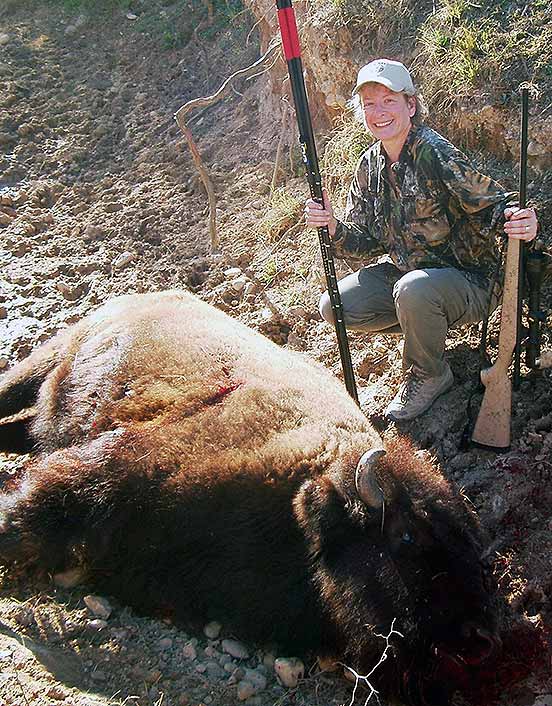
We also get into scope magnification, reticles and (these days) extremely repeatable adjustments. These discussions also go on and on, because apparently there’s a PERFECT magnification for any shot taken at a big game animal, whether at 10 or 1000 yards, and we simply must own a scope capable of being cranked to that specific, perfect magnification. Otherwise, once again, any animal we shoot may not be really, most sincerely dead — or at least not die to our standards, which are often affected by hunting videos, where just about every animal Drops Right There. (Though I have read different definitions of DRT, including any animal that falls within sight of the hunter — or as one smart-mouth suggested, DROT, Dead Right Over There.)
Then there are the rifles themselves. Many 21st-century hunters firmly believe any rifles with old-fashioned wooden stocks are even more of a handicap than unbonded bullets. But even hunters who agree stocks should be made of some sort of anti-wood — whether miracle fibers, remolded water bottles or aluminum — can become quite vehement about their personal choice being PERFECT for some particular animal whacking. This despite the fact that their personal choice comes in a wide variety of weights, shapes, colors, and number of Picatinny rails.
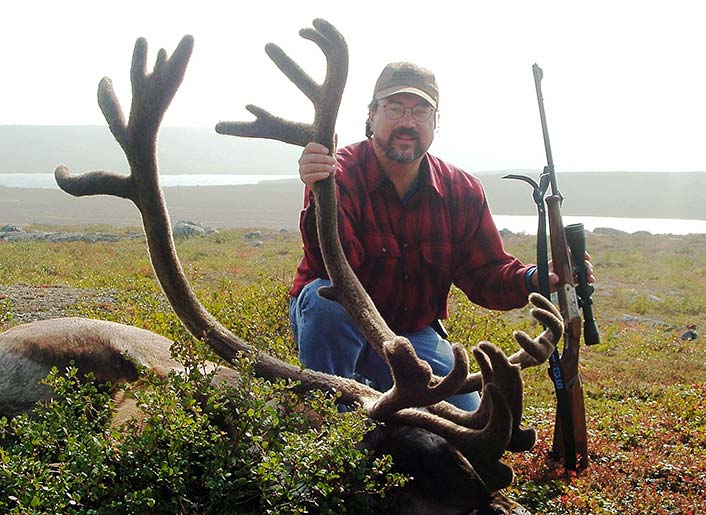
At the opposite extreme are traditionalists who refuse to hunt with “plastic” stocks, and the thought of actually touching an aluminum stock makes them shudder, even on warm days. Many traditionalists also cannot imagine using any bolt-action without a long Mauser-type extractor, to “control” the cartridge during its long and difficult journey from magazine to chamber. Apparently this is because SOME sort of dangerous game may charge a hunter sitting in a stand overlooking a green field. After all, the Internet is filled with reports of mountain lions appearing where they “officially” don’t exist anymore, so we must constantly be prepared to stop any charge, anywhere, and the ONLY way to do so is with a controlled-feed action. (Unless, of course, we own a double rifle.)
One trouble with this continual pursuit of perfection is that big game animals come in a wide range of sizes, and among other places live in Arctic tundra, dry deserts, high mountains and tropical rainforest. You could probably hunt for a lifetime and never shoot one at EXACTLY the same range, and even white-tailed deer come in sizes from German shepherd (or if you prefer to argue some more, Belgian Malinois) to NFL lineman.
This is probably why so many rifle loonies keep changing their minds about hunting-rifle perfection: Every hunting moment is different, which is why we must remain ever-alert for possible perfection — and change our minds about that perfection, since the constant flow of “new and improved” stuff suggests we’re risking failure if we don’t take advantage of every possible variation.
A few years ago I did a radio interview with the host of a hunting show, who asked why rifle loonies change rifles almost as often as they change underwear. I replied, “Because they’re looking for the rifle that will change their lives.”
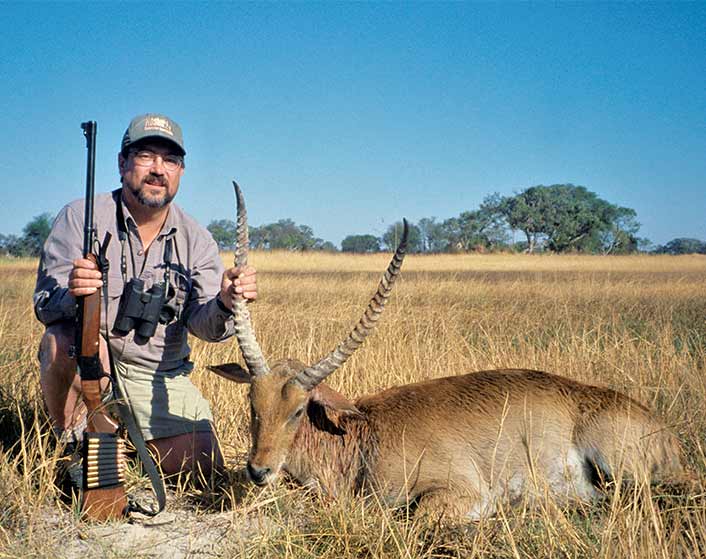
If you don’t believe me, you’re probably one of the very few Campfire members who doesn’t regularly check out the classifieds. If you did, you’d notice ads for brand-new, high-grade rifle barrels, some of them already attached to high-grade custom actions — or at least a Remington 700 “blueprinted” by a semi-famous gunsmith. The ad will say, “Decided to go in a different direction.”
This means the seller started the process of “building” yet another custom rifle, but changed his mind in mid-project. I even recently saw one ad for a brand-new custom rifle that was, at that moment, in transit from the gunsmith, because the owner decided to “go in a different direction” after being told his perfect rifle was on the way.
The thing that’s puzzling about these ads, at least to me, is not that they exist. Like any rifle loony, I have occasionally changed my mind about unfinished custom rifles. The last was a reproduction Winchester High Wall single-shot from a top-notch company. I ordered it in .30-40 Krag — but before the custom shop had started putting together my rifle (which of course can take several months) I happened on exactly the rifle I’d ordered at a gun show — and the table happened to be rented by a good friend, who offered me a real deal. So I changed my custom-rifle order to .45-70, which showed up about a year after my initial order.
Of course, custom rifles can take MUCH longer to complete. One of mine took several years — and the gunsmith had promised it by “spring black bear season.” Sometime during this wait I asked him about the bear-season promise. He grinned and said, “I didn’t say WHICH bear season!” That was OK, because like any good little rifle loony I already had plenty of hunting rifles that would work on bears.
But one of my long-term custom rifles almost never showed up at all. This was a rifle arranged by a friend in the shooting biz, who said I’d helped him so much in various ways that he could arrange for a rifle to be built by a really good custom gunsmith, if I’d supply the basic parts.
Obviously, of course, he expected his gunsmith friend would get some publicity in return, and if the rifle worked like it should (I have encountered custom rifles that did not) I’d be happy to provide publicity. So I sent a spare bolt action off to the gunsmith, who would contact me after he checked out the action, so we could decide on a barrel and stock.
I didn’t hear anything for a few months, so called my friend to make sure the action had arrived. It had — but the gunsmith had some health problems that would prevent him from working for a while. (The health problems later proved fatal.) So my buddy got the action back, and arranged for two other gunsmiths to do the work, one a barrelmaker and the other a “traditional” stockmaker. Both owed my buddy favors, and agreed to the deal — but due to various factors were not particularly quick. In fact, eventually everybody except me and the barrel maker passed away — one of the hazards of ordering custom rifles as we grow older in the search for perfection.
Luckily, a few months earlier I’d grown weary of waiting, demanding the action, stock and barrel be shipped to me, five years after sending the action to the first guy. Not so oddly, some parts were missing from the action, but who knows which shop they were left in? It took me about two weeks to get the rifle up and running — with a synthetic stock I already had on hand. (One great virtue of synthetic stocks is they don’t take nearly as long to finish up.)
All of this is why I’ve become less enamored of the long-term pursuit of perfection, so often just buy an already existing rifle instead of having one “built.” This doesn’t mean I haven’t developed some notions of perfection, including the conviction that a .17 Hornet, shooting 20-grain plastic-tipped bullets, is the best prairie dog cartridge of all time. It works great out to at least 300 yards, about as far as most of us can hit more PDs than we miss, with so little recoil we can watch both hits and misses through a high-X scope. It’s also cheap to shoot, and barrels last a long time. (Of course, I’d probably change my mind if somebody developed a high-BC, plastic-tipped bullet for the .14 Hornet.)
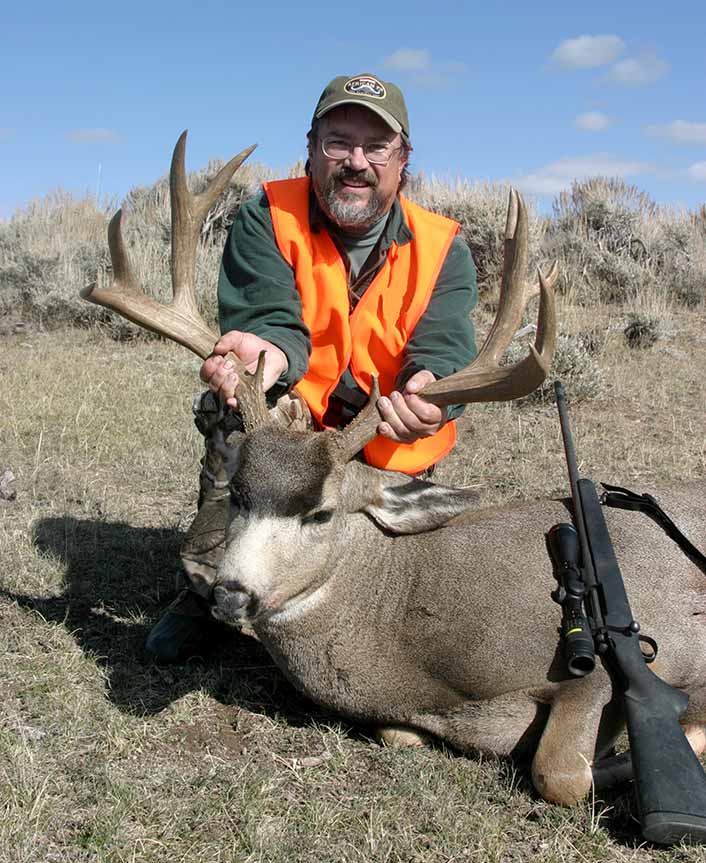
But over several decades of pursuing perfection I’ve also managed to hunt a lot of big game with a lot of rifles, cartridges, scopes and bullets, and also observe at least as many other rifles (both perfect and imperfect) in action in the hands of my hunting companions. During all that hunting I have seen several things that, according to some hunters, are simply not possible, including:
A number of trophy big game animals killed out to 500 yards with factory .30-06 ammo, mostly boring old 180-grain. (Since I’ve never seen this happen at over 500, apparently that IS impossible.)
Tough African game travel farther when “perfectly” hit by a .375 H&H than by a 7×57 or .30-06 — and moose and bison killed so quickly with one lung-shot from the dreaded .270 Winchester that there wasn’t enough time for a second shot.
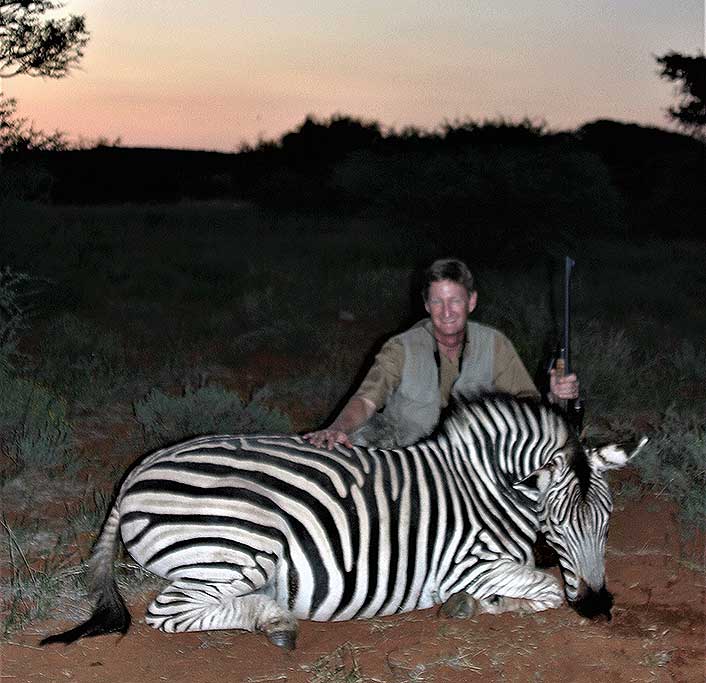
A grizzly bear killed with a push-feed rifle, which the hunter somehow manipulated for quick second and third shots, without a malfunction! (The extra shots turned out to be unnecessary, but it’s a good idea not to take chances on potentially dangerous game.)
More than one hunter jam a controlled-feed action, usually by short-stroking the bolt.
Cape buffalo killed with a single-shot rifle. (And the hunter survived!)
Many caribou bulls killed with walnut-stocked rifles, despite caribou living where the climate tends toward wet.
Big game killed quickly by “target” bullets, and wounded because “controlled expansion” bullets failed.
Custom rifles that would not shoot as accurately as an average factory rifle, because the gunsmith buggered the stock bedding, used a barrel with the wrong rifling twist, or over-tightened the scope rings.
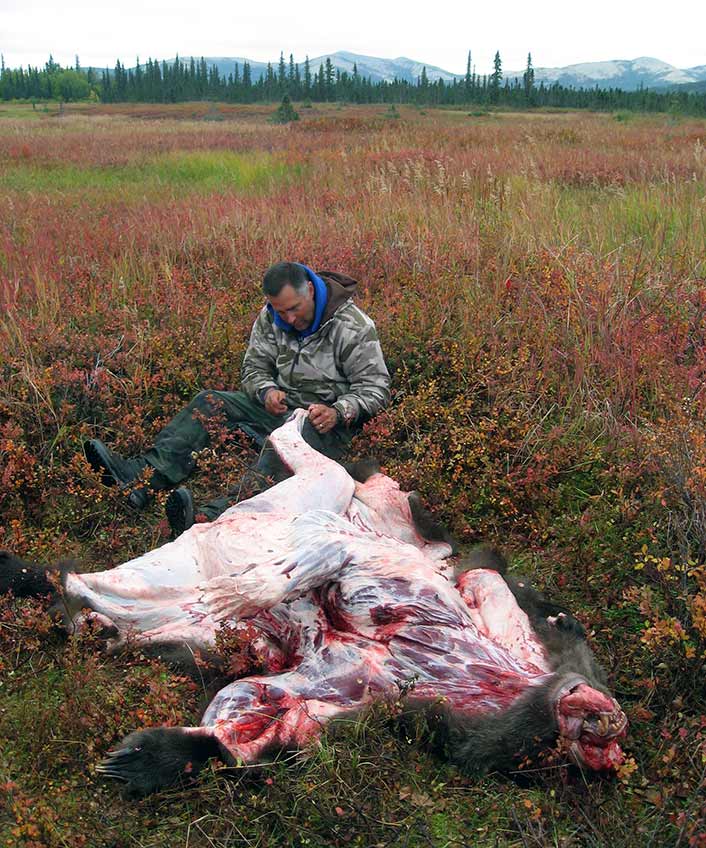
Of course, some scopes have fallen apart during hunts, both on my rifles and those of companions — but scopes have always been the weak link in modern hunting rifles. This is one reason I quit trying so many scopes several years ago. Instead I use older, well-proven scopes, or newer scopes that people I trust have tried. Even then there have been glitches, but nothing compared to the days when I had to try a dozen magical new scopes every year for various writing assignments.
Maybe I’m simply getting jaded — partly due to at least a third of my hunting rifles being well-proven synthetic-stocked models, suitable (if not perfect) for slaying anything from prairie dogs to Cape buffalo. However, this does NOT mean I’ve quit buying, selling and trading rifles. These days I’m more interested in the history of hunting rifles, so have purchased or swapped for rifles up to 150 yards old. Apparently this is due to realizing that while rifles still fascinate me as much as they did back in grade school, I’ve accepted the that none will change my life.
Stay Connected
- Got a Break in the Montana Missouri Breaks
- It Took Six Days but We Finally Slipped One Past the Bears and Wolves
- No Mule Deer This Fall – Whitetail TOAD!
- An Accounting of Four Idaho Bulls (Elk)
- Arizona Deer Hunt 2019: Good Times with Great Guys
- Caught a Hornady 143 ELDX Last Night
- Cookie’s 2019 Mule Deer Photo Run
- Let’s See Some Really Big Deer
- Alaskan Moose Hunt Success!
- Take a Mauser Hunting: An Important Message From The Mauser Rescue Society!
- Welcome 16 Gauge Reloaders! Check In Here.
- Off-Hand Rifle Shooting – EXPERT Advice
- BOWHUNTING: A Wide One!

